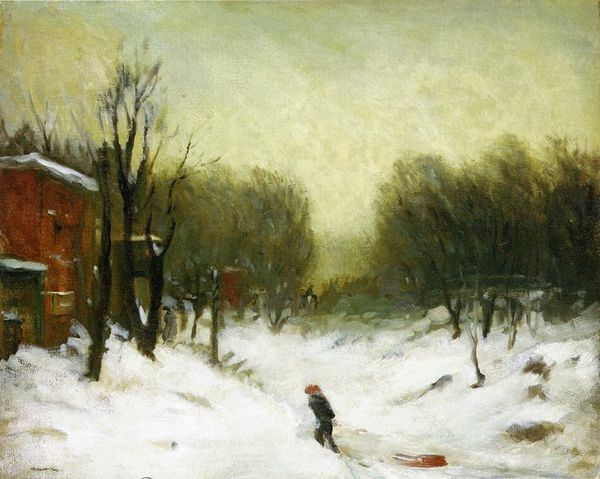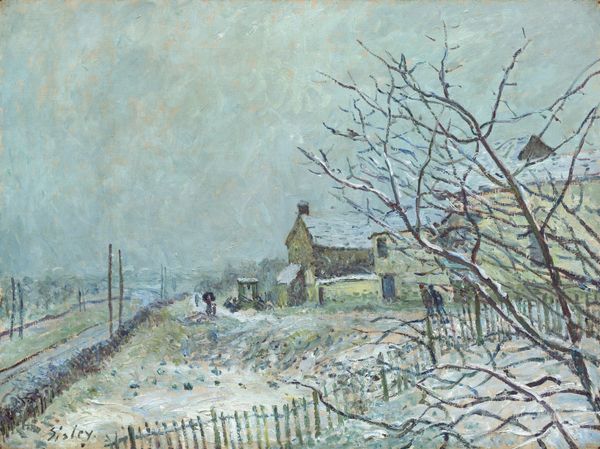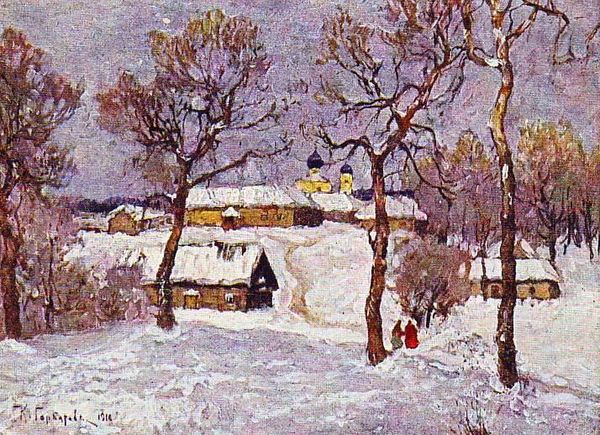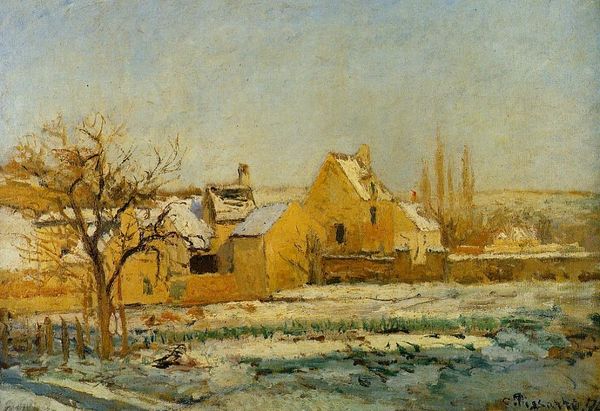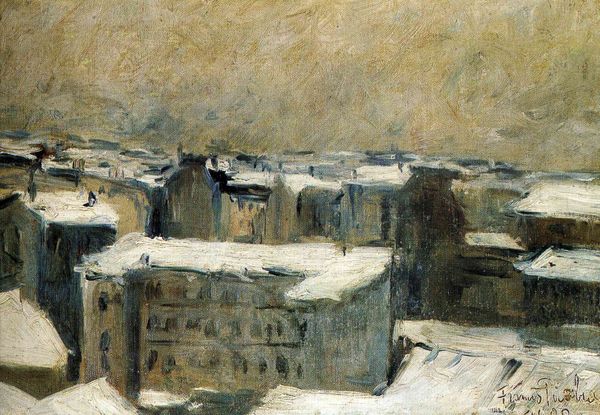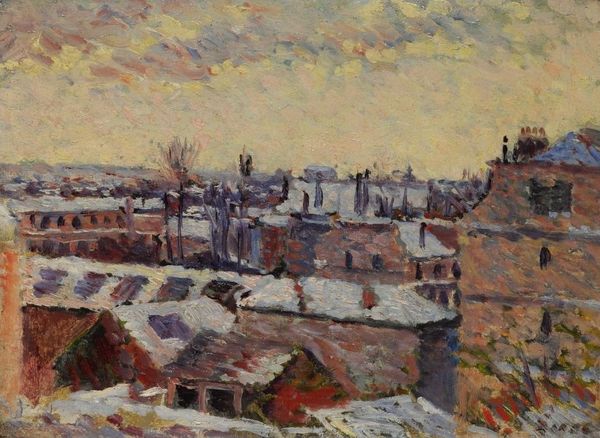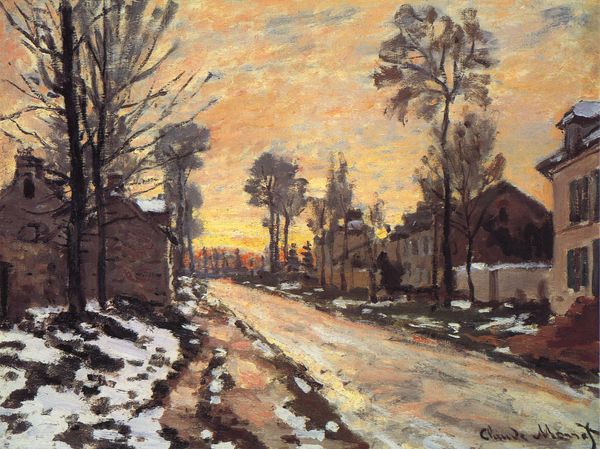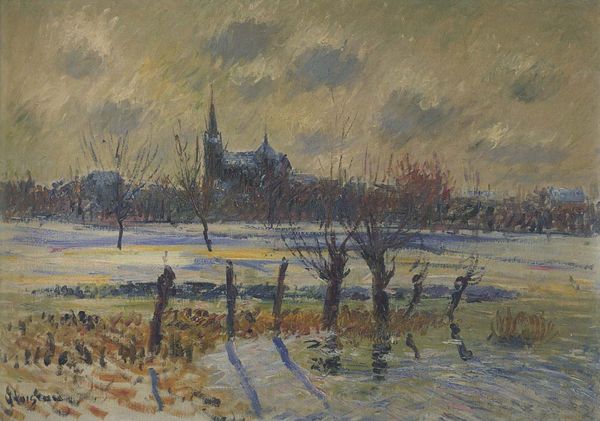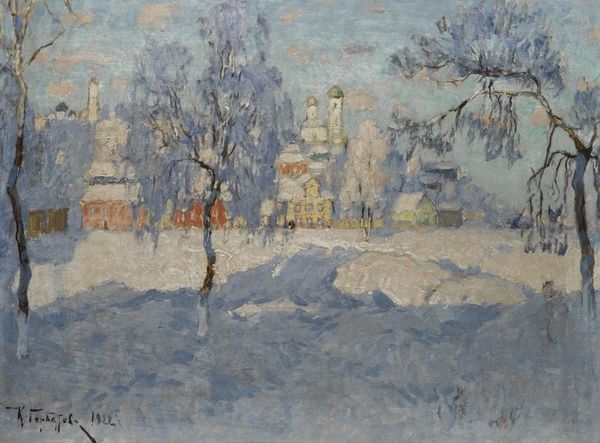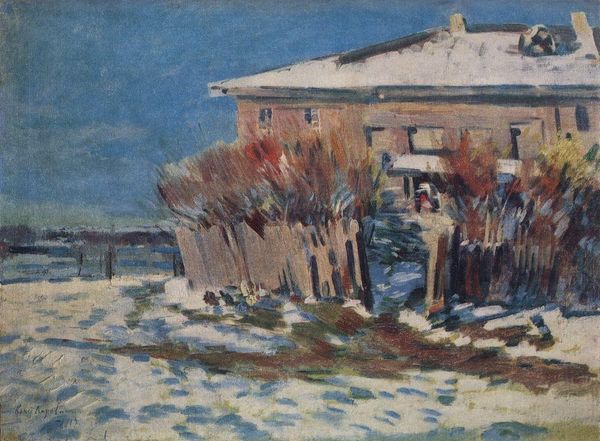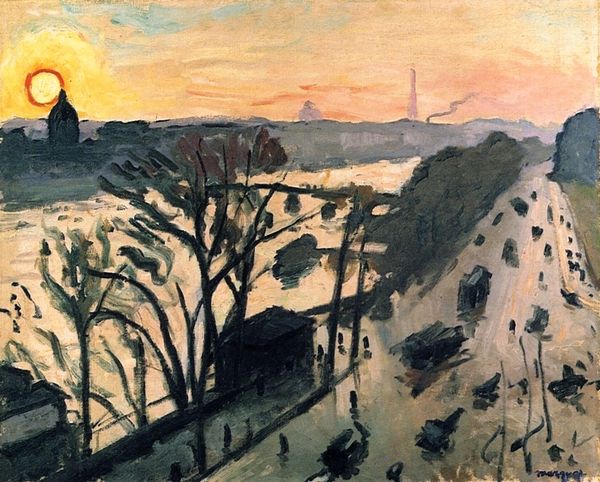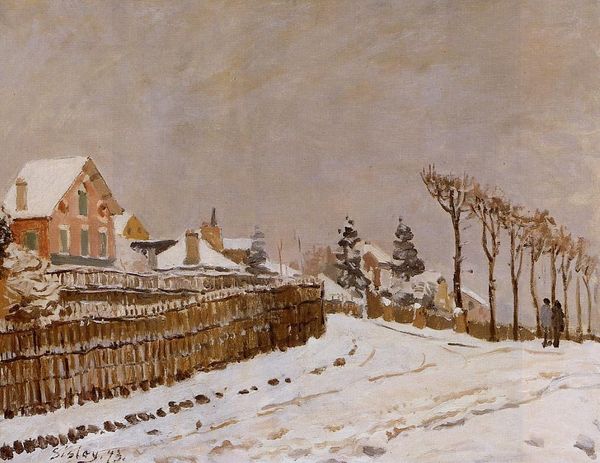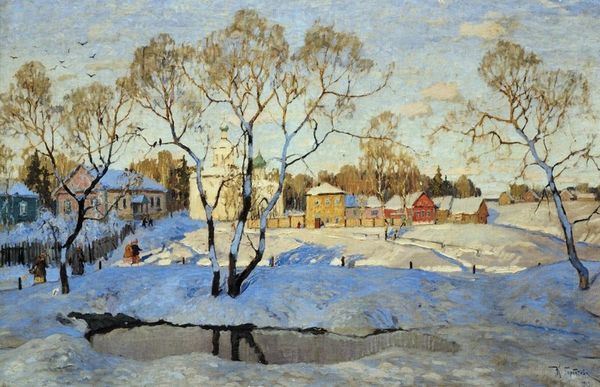
painting, oil-paint
#
painting
#
oil-paint
#
landscape
#
oil painting
#
underpainting
#
expressionism
#
painting painterly
#
realism
Copyright: Constant Permeke,Fair Use
Curator: Here we have Constant Permeke’s "Winter in Flanders," painted in 1930. Editor: A rather somber piece, isn’t it? The muted colors, almost monochromatic, create a feeling of cold isolation. It seems to be an oil-based medium; one sees visible, heavily applied brushstrokes, and that gives the landscape a textured quality. Curator: Indeed. Permeke was a key figure in Belgian Expressionism. You see his characteristic earth tones reflecting the rural landscapes and the working class that he so often portrayed, elevating their status within the social context. Editor: And look at the density of the paint! He really builds up the surface; you can practically feel the weight of the snow, of the cold, of the land. There is little indication that Permeke thinned his oil-based medium, which allows for a textured feel and highlights the medium. What I also find interesting is his use of raw material from the Flander region as the social subject. Curator: Consider how Permeke returned to Belgium after wartime exile, driven by the social conditions to develop what some might call a darker realism, contrasting sharply with conventional notions of landscape painting, which often romanticized the scenery. It is worth noting, too, that he uses a high point of view to make commentary on labor. Editor: The solitary figure on the horse-drawn carriage suggests that themes of toil and hardship are an undercurrent of Flemish realism and are meant to permeate this landscape of solitude. Permeke seems to suggest through raw oil-based paints, combined with expressionistic application, a type of realism, Curator: By focusing on such themes, Permeke challenged the idealized representations prevalent at the time and encouraged society to acknowledge those people that go widely unseen. Editor: In this context, the moon may offer, at best, bleak hope in Permeke’s depiction of class struggle as a result of industrial change in Flemish society. Thank you for your input; these socio-political factors help unlock this somber work! Curator: The perspective of materialism also reveals the heavy realities underlying societal dynamics of landscape depiction in "Winter in Flanders."
Comments
No comments
Be the first to comment and join the conversation on the ultimate creative platform.
